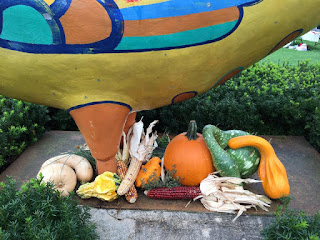Recently a discussion about a probable deity named Berchtold arose in the main Urglaawe group on Facebook. There are a few citations regarding Him in Grimm's Teutonic Mythology (pp. 279 and 932) and a related holiday in Alemannic areas, primarily Switzerland and Liechtenstein. The Urglaawe community undertook some preliminary research. There is a lot more work to be done on this topic, but this is a start.
The scant lore on Berchtold leads me to the following:
1). Given that Berchtold is seen as sometimes being at the head of the Wild Hunt, there is "something" there that requires more research;
2). Competing proposed origins of the event from different contexts and perspectives may not be any more or less valid than our emerging Heathen perspective, but, as Heathens, we would be remiss in our spiritual endeavors if we did not explore our angles as thoroughly as possible;
3). The placement of the Berchtoldstag observance is quite possibly a result of calendar shifting related to Epiphany, the Protestant Reformation, and other influences. Since no one knows the true origins of the observance, no one knows how it got to the current date, either;
4). The lore that states that men would go about town pressing others whom they encounter to drink to Berchtold is interesting. One of the possible roots of Berchtold is dialectic "berchten," which means "to walk around asking for food." This brings up a little-known Deitsch entity, Bechtel or Bechdel, who is associated with begging and definitely who needs more research in this context. This could be a crucial connection. Additionally, another name for Berchtoldstag is Bärzelistag, which, on the surface, appears to be related to the Deitsch verb "barzle," which literally means "to tumble" but also has a semantic meaning of "to roll" (as in a mugging) or "to accost";
5). Keeping in mind that Berchta commands a bare-bones meal on Twelfth Night, we could be seeing something related to the hunger from that meal. The pressing of others could also be a test of faith (which has come up in discussions before), and the wandering sounds akin to wassailing or New Year's greetings, which are intended also to elicit hospitality from those visited;
6). Conjecture: Nuts, which are related to this observance in Alemannic areas, are potential life, and that is the point on the cycle where we currently are. If Berchtaslaaf is the end of Yule, the "death" of the calendar year, etc., then perhaps Berchtold can be viewed through a lens of the things that bridge death to new life. It may be useful as part of the research process to examine commonalities between Berchta (and, perhaps Berchtold) and "Father Time" types of lore. Additionally, we already honor Lollus/Luul at this time... Lollus' sole depiction is that of a child holding His tongue. Could there be a link between Lollus/Luul and "Baby New Year" types of lore?;
7). Keeping in mind that there is still a lot of speculation here, my inclination is, until we know more or our understanding evolves, to honor Berchtold alongside Berchta on Twelfth Night. As some of you may know from Berchta's meal discussion on the Kochkunscht guild, the meal requirement appears to run on the calendar day of December 31 (Eleventh Day (Dec. 31 reckoned by nightfall) and especially Twelfth Night (January 1 reckoned by nightfall).
In a similar manner, Berchtold could be honored at the beginning of Twelfth Night (sundown December 31, which actually begins January 1 since a "day" starts at sunset the prior evening) through the end of Yule (sunset on January 1, which, by nightfall reckoning would begin January 2).
This would create a "bridge" time of the specific honoring Bercha and Berchtold from sunset on Twelfth Night until sunrise on Twelfth Day, and it would create another bridge time of the specific honoring Berchtold and Luul from sunrise January 1 through sunset January 1 (again, sunset starts January 2).
There is at least one other way to consider the reckoning, but this is how I am planning to observe the end of Yule this year. Over the course of the next year, I'm hoping that we can get insights and lore from folks in Switzerland and Liechtenstein.


























